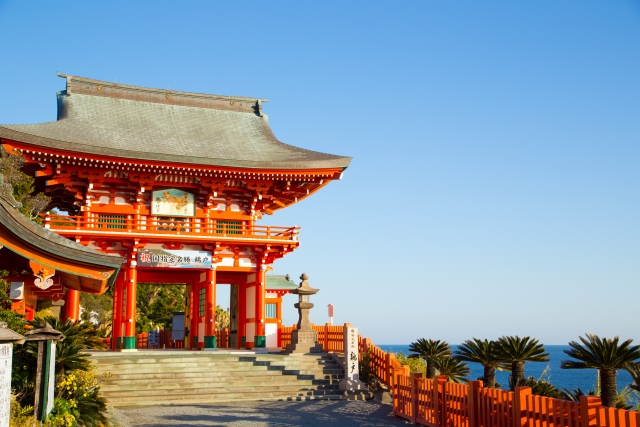”Udo Jingu Shrine” is a shrine located on a cliff in Nichinan City, which attracts visitors with its mysterious atmosphere and beautiful natural scenery.
The experience of visiting the shrine as a “kudarimiya” while the waves of the Hyuga Sea echo in the rocky caves will make you feel something special.
Overview and features of Udo Jingu
Udo Jingu Shrine, located in Nichinan City, is a shrine with a mysterious atmosphere.
It is known as “Kadarimiya”, which is rare for a shrine because it is enshrined halfway up a cliff and the main shrine is enshrined in a sea cave.
It is a power spot that many people visit because of its magnificent natural scenery and historical value.
A rare style where the shrine is at the end of the stairs.
It is a unique structure that enshrines a god at the bottom (generally, there is a shrine at the top of the stairs).
Together with Gunma’s Nukisaki Shrine and Kumamoto’s Kusakabe Yoshimi Shrine, it is said to be one of Japan’s three major kudarimiya shrines.

Sakuramon gate in front of the descending stairs leading to the main hall.
It is a scenic spot with a beautiful contrast between the vivid vermilion gate and the blue sea.
Main shrine

Udo Jingu shrine is characterized by its vivid main shrine inside a cave.
In addition to being a “Kudarimiya”, the main shrine inside the cave has a unique atmosphere.
information about Udo Jingu Shrine
| Info | Udo Shrine ■Location 3232 Miyaura, Nichinan City, Miyazaki Prefecture ■Business hours 6:00~18:00 ■Parking lot Parking available ■Inquiries Tel:0987-29-1001 ■Website www.udojingu.or.jp/ |
| Map |
SNS posting(#鵜戸神宮)
Find and make reservations for nearby restaurants
Find a good restaurant and have the best tour!


Comments